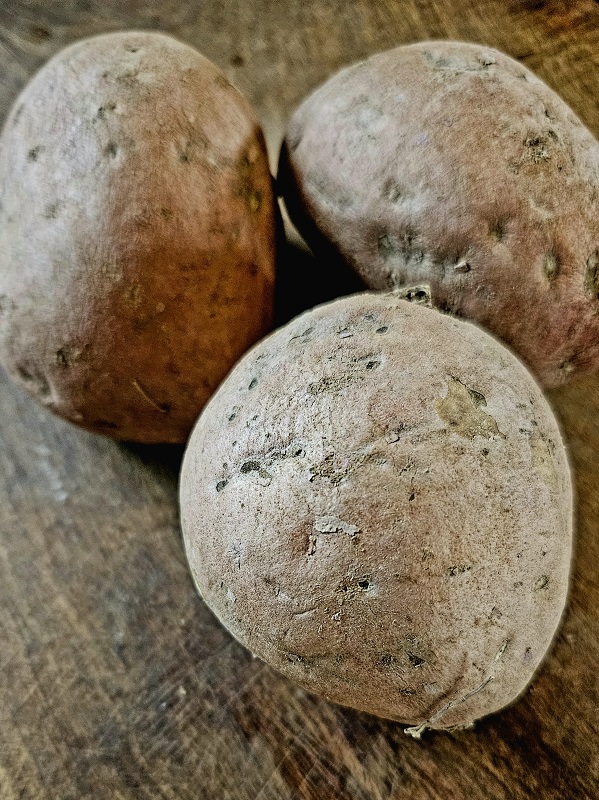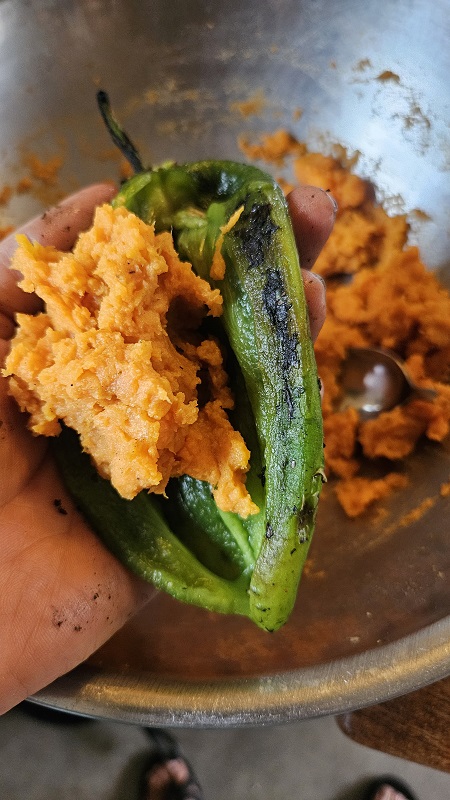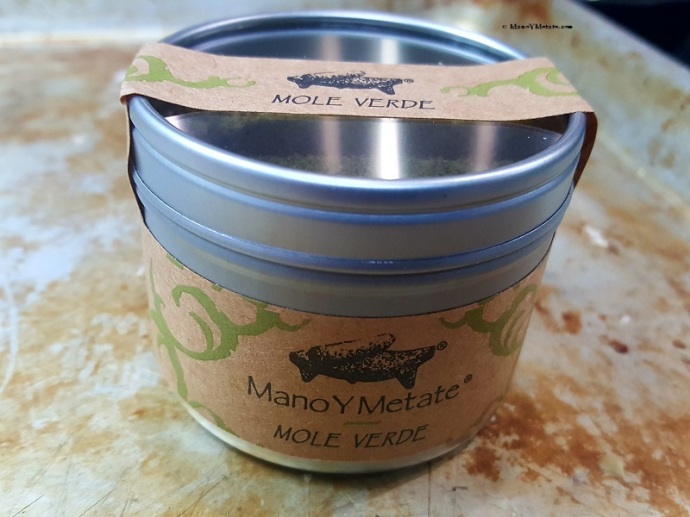
Hello friends, Amy here celebrating the harvest. At Tucson CSA this fall we had several batches of gorgeous, fleshy, green chiles! Farmer Frank of Crooked Sky Farm has been supplying us for years and years. The smell of charring them at home reminds me of doing it with my grandfather.

First things first, I made my great grandmother’s chiles rellenos with my family. Stuffed with cumin spiced beef, fried with a light egg batter and toped with a mild tomato sauce, these must be eaten immediately after they’re done. Yes, at the beginning only one person is eating a relleno at a time.

We also made chiles en nogada, filled with a complex pork and raisin filing, topped with walnut and almond sauce.

Next I wanted to try something new… I started with sweet potatoes from my CSA.

After peeling and cooking, I mashed them with some Mano Y Metate Pipian Picante powder, butter and salt.

I loved how the mixture didn’t fall out of the chiles like the other fillings did!

Also, I loved the color combination of orange and green so I overstuffed them to let it show.

To finish, I gently heated ghee and more Pipian Picante powder.

Then drizzled it over the still warm chiles. Since these chiles were so mild, I really welcomed extra spice. (Pipian Picante is medium spicy). If my chiles were hotter, I would have chosen the milder Pipian Rojo powder.

The filling and topping were so good I can imagine eating it without the chile if they were not on hand. Or chopping the chile and mixing it in to the sweet potatoes. Enjoy the chile until the frost!

We’ll be selling mole powders at Holiday Nights, so come visit with us at Tohono Chul in Tucson, Friday and Saturdays Dec 8, 9, 15, 16 from 530-830pm.

































































































